Why Esperanto ?
(More than 450 links)
20 Reasons to learn and use Esperanto
|
Why so many people learn Esperanto?
What is Esperanto?
| |
|
In this page you will see some of the many advantages of
knowing Esperanto.
|
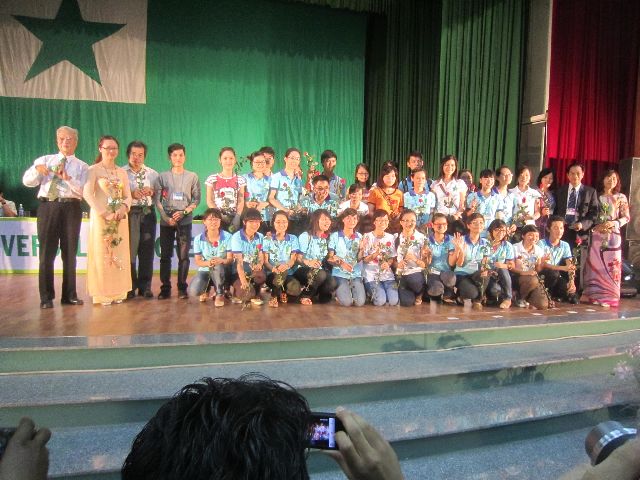
Picture 1703. August 4th, 2012. I took this picture in
Hanoi. |
Is this a good reason to learn
Esperanto?
Ten pictures from Hanoi and
Seoul.
Resources to learn
and use Esperanto.
Some reasons to learn and use Esperanto:
(Menu M1)
1. International travel. Meeting
Esperanto speakers from all over.
2. Contacting people from other
countries, other cultures.
3. Internet contacts.
Amikumu to find contacts.
4. Internet group chatting.
5. Traveling.
6. Receiving travelers.
7. Conventions, meetings.
8. Edzperanto. Edz-per-ant-o.
9. People that helped us in Hanoi
and Seoul. (10 pictures)
Other ways to use Esperanto:
(Menu M2)
10. Esperanto helped
to improve the economic level of many countries.
11. Not intended benefit:
Knowing Esperanto helps to learn other languages.
12. Students who know
Esperanto do better in other subjects.
13. Learning Esperanto as a child.
14. Vikipedio.
15. Books.
17. Magazines.
18. Radios.
19. Podcasts.
20. Esperanto speakers.
21. Songs, Music.
22. Videos, movies.
Christopher R. Mihm movies.
26. YouTube, Vimeo.
27. Facebook.
28. LinkedIn.
29. Discussion groups, forums.
30. Current events.
31. Web sites with many Esperanto
materials.
32. Web sites with many links.
33. Other Esperanto web sites.
34. Blogs.
35. Organizations that use Esperanto.
36. Buying books, and more. Retbutikoj.
About Esperanto:
(Menu M3)
51. What is Esperanto?
52. Learning Esperanto.
53. Some extra help to learn Esperanto.
54. Courses in Esperanto.
55. Esperanto is the easiest language to
learn. Learning time is shorter.
56. Writing in Esperanto.
61. Esperanto organizations.
62. How can we help?
63. The purpose of this page.
64. Learning other languages.
81. Some web pages by
Enrique.
Enrique's all pages
1. International travel. Meeting Esperanto speakers from all over
(To M1
M2 M3)
The picture shows Vietnamese volunteers, Esperanto speakers,
including 24 university students, 20 of them are women.
This is part of the 2012 Esperanto World Convention, at Hanoi,
Vietnam. People from 60 countries were speaking Esperanto
at this event.
(People that helped us, middle
of this page)
(More details)
World Esperanto Conventions occur every year in a different
country. 2010 Havana, Cuba; 2011 Copenhagen, Denmark;
2012 Hanoi, Vietnam; 2013 Reykjavik, Iceland; 2014 Buenos
Aires, Argentina; 2015 Lille, France. This allows Esperanto
speakers to travel to different countries, and once there to speak
with people from more than 50 countries. I participated at the
1992 Vienna, Austria, Convention with 3033 people from 75
countries; the 2004 Beijing, China, with 2051 people from 52
countries; and 2012 Hanoi, Vietnam.
2. Contacting people from other countries, other cultures
(To M1
M2 M3)
Esperanto main purpose is to allow communication between
people from different languages, different cultures. It is intended
for international contacts. Locally, every region should keep
its original language. Several ways to implement these contacts
exist. Originally was mainly by paper mail or traveling. Today,
Internet makes every thing easier.
3. Internet contacts (To M1
M2 M3)
The first contacts were by Internet discussion groups, later
by email. Today many people prefer sites like Skype, Facebook,
LinkedIn, Second Life, Ipernity, Lernu.net, instant messengers,
or many other
chat rooms.
In most of those sites you can search for the word (or for the
language) "Esperanto". Follow up could be easier by email.
To find Esperanto speakers,
and allowing them to find you:
Amikumu:
It is a telephone application to search Esperanto speakers.
It shows the 100 members nearer to the user, in sequence by
distance. The nearer members are shown first on the list.
Facebook.
Now it works only for Esperanto. More languages will be added.
This is the free version. The paid version will have more ways to
find members.
The
Edukado.net
Community has more than 4500 members from 128 countries.
(June 17, 2017)
See them and search among them:
Community,
Users You have to register (free)
Esocom. Por Esperantista Retejo, by Frank Merla.
Maklerejo
Tutmonda Esperanto-adresaro.
Esperanto speakers location:
USA map
Add yourself to
map
Canada map
Add yourself to map
Chile map
Add yourself to map
Bharat map
World map
4. Internet group chatting
(To M1
M2 M3)
"Google +", "Skype", "ooVoo" and other instant
messengers allow group chatting.
Google+ Hangouts. Video call with up to 10
friends. (More if audio only)
Skype. Group call with up to 25 people.
ooVoo.
Video chat with up to 12 friends.
5. Traveling (To M1
M2 M3)
During the last hundred years many people had traveled
using Esperanto. Local Esperanto speakers help to plan an itinerary, and then, many of them would offer their houses to stay, so you can travel without paying hotels, and eating with local people, saving most of the money spent when traveling.
I have spoken Esperanto in 31 countries: ...
America: (10) Argentina, Canada, Chile, Colombia, Costa Rica, El Salvador, Mexico, Uruguay, USA, Venezuela, ...
Asia: (4) China, Japan, Korea, Vietnam, ...
Europe: (17) Austria, Czech Republic, Denmark, Estonia, Finland, France, Germany, Hungary, Italy, Latvia, Lithuania, Netherlands, Poland, Portugal, Slovakia, Spain, Sweden.
6. Receiving travelers (To M1
M2 M3)
For each traveler enjoying these benefits, there are other
Esperanto speakers receiving guests. I have done this many
times ... some times just offering a guided tour in my car, some
times including a stay at my house. This is a good and
inexpensive way to meet people from other countries.
7. Conventions, meetings
(To M1
M2 M3)
Esperanto meetings occur at different levels:
World
Conventions. Once a year, end of July or early
August, every year in a different country. Generally the participants come from more than 50 countries.
2021
Belfast, Ireland.
2020
Montreal, Canada. August 1 - 8
To register.
2019
Lahti, Finlandia. July 20 - 27. 917
registrants from 57 countries
2018
Lisbon, Portugal. July 21 - 28. 1567 registrants
2017
Seoul, Korea. July 22 - 29. 1173 registrants
2016
Nitra, Slovakia. July 23 - 30.
1253 registrants from 60 countries
2015
Lille, France. July 25 - August 1.
2698 registrants from 80 countries
2014
Buenos Aires, Argentina. July 26 - August 2.
706 registrants from 57 countries
2013
Rejkjavik, Iceland. July 20 - 27.
1034 registrants from 55 countries
2012
Hanoi, Vietnam. July 28 - August 4.
848 registrants from 62 countries
2012
Hanoi, Vietnam. July 28 - August 4.
Enrique's page, 200 fotoj.
2011
Copenhagen, Denmark. July 23 - 30.
1413 registrants from 66 countries
2010
Havana, Cuba. July 17 - 24.
1002 registrants from 59 countries
2009
Bialystok, Poland. July 25 - August 1.
1860 registrants from 61 countries
2008
Rotterdam, Netherlands. July 19 - 26.
1845 registrants from 73 countries
2007
Yokohama, Japan. August 4 - 11.
1901 registrants from 57 countries.
2006
Florence, Italy. July 29 - August 5.
2209 registrants from 62 countries.
2005
Vilnius, Lithunia. July 23 - 30.
2344 registrants.
2004
Beijing, China. July 24 - 31.
2031 registrants from 51 countries.
2003
Gothenburg, Sweden. July 26 - August 2.
1792 registrants.
2002
Fortaleza Brazil. August 3 - 10.
1484 registrants.
2001
Zagreb, Croatia. 1691 registrants.
2000
Tel-Aviv, Israel. 1212 registrants.
National conventions. Many countries have annual
conventions, each year in a different city. Some of the
participants come from other countries.
Regional meetings. Could happen once a month or
once a week.
Meetings for families, for youth, festivals, or for any
other purpose. These meetings generally bring people from
several countries.
There are also international courses. See
NASK, USA
(on the upper right, choose English). From
Esperantic
Grésillon, France
(on the upper left, choose Esperanto, French, or German. Sorry,
no English)
Universitato de
Esperanto. This page only in Esperanto.
NIS, Novjara Internacia Semajno (New Year International week)
Lu Wunsch-Rolshoven,
Germany.
The
Eventoj
calendar lists future international meetings
and also the ones already past. More events will be
listed.
(Don't fill the blanks, just scroll down)
|

|
8. Edzperanto. Edz-per-ant-o.
(To M1
M2 M3)
You wouldn't learn Esperanto just for this, but ...
Many young people (or young at heart) meet at Esperanto
meetings. Some of them fall in love ... and get married. Those
that are from different countries, different languages, have to
keep using Esperanto. And later, their children hear Esperanto
more than other languages. They learn it as first language. A
couple of years later, they speak Esperanto, the mother's
language, and the father's language. About 2000 children
learned Esperanto from birth.
Edz-per-ant-o. Edzo: husband. Per: by means of. Ant: active
participle. Peranto: agent, intermediary. Edzperanto: agent to
find a husband, matchmaker. Denaska: from birth.
9. People that helped us in Hanoi and Seoul.
(10 pictures)
(To M1
M2 M3
Last picture)
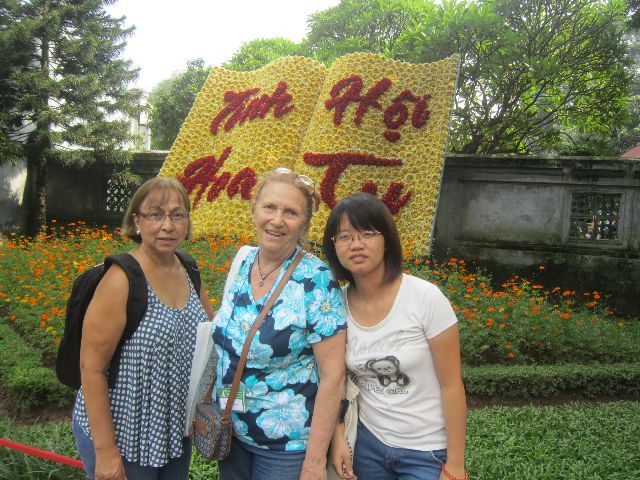
1497. August 1st. Rina, Silvia Rottenberg, from Buenos Aires,
and volunteer Trang Pham Minh. Trang dedicated the whole day
to show us around Hanoi, Vietnam.
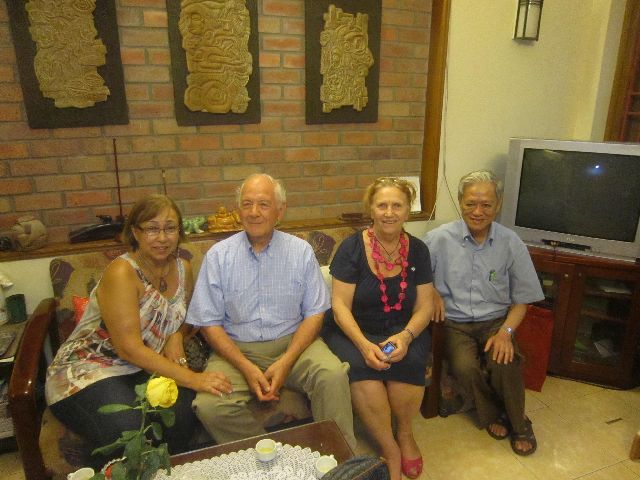
1747. August 4th. Professor emeritus Nguyen Xuan Thu invited
us to visit his house.
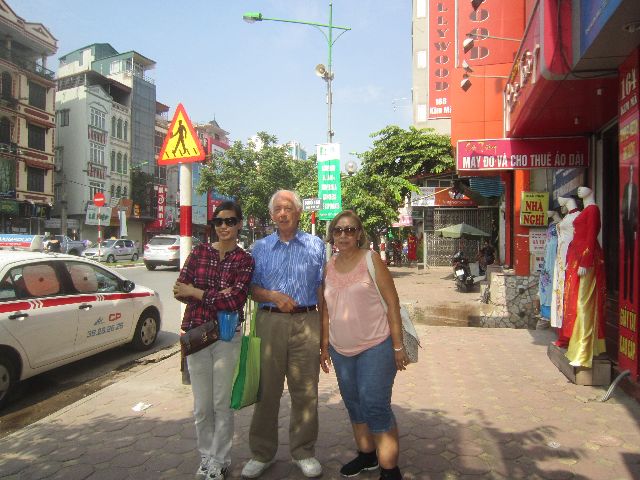
1791. August 5th. Linh Le Xuan, Enrique, Rina. Linh dedicated
a good part of the day to show us around Hanoi.
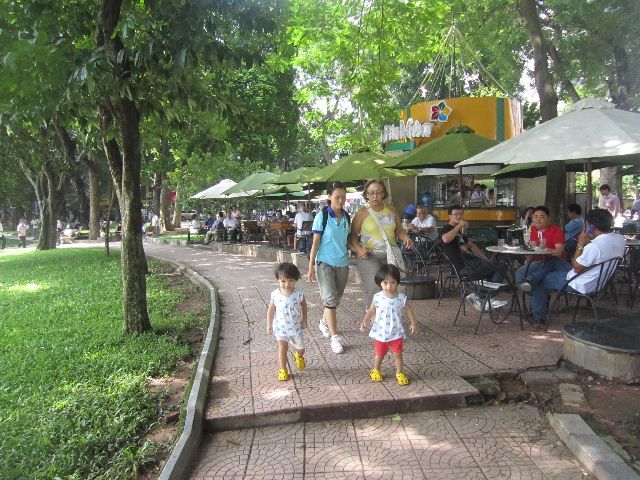
2317. August 9th. Volunteer Nho Le Thi and Rina. Nho Le dedicated
the whole day to show us around Hanoi.

2552. August 11th. Arbaro, Rina, at Deoksugung Palace.
Arbaro dedicated 3 whole days to show us around Seoul, Korea.
Some of the Koreans that helped us, used Esperanto names.
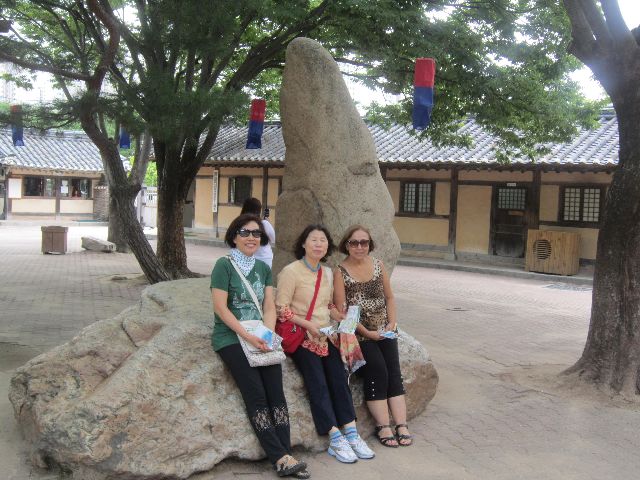
2788. August 14th. Kristalo, Brila, Rina, at the Korean Folkloric
Village, outside Seoul. They spent the day with us.
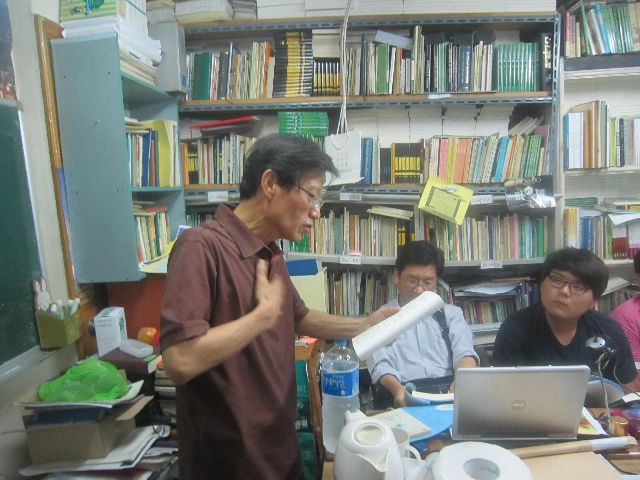
2911. August 14th. Lee Jung-kee at his own
Esperanto-Culture-Center. Arbaro is at the right. Jung-kee
coordinated all our moves in Seoul, and with Brila's help, got
a beautiful hotel room for us, at a very good price, within half
a mile from downtown.
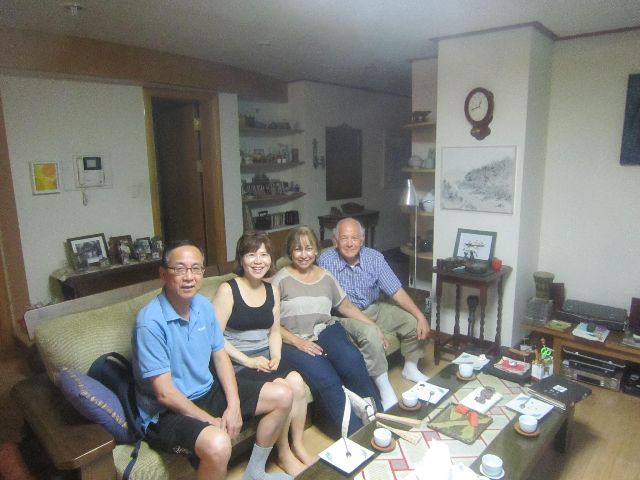
2931. August 15th. Feliĉa and her husband, invited us to visit
their apartment.
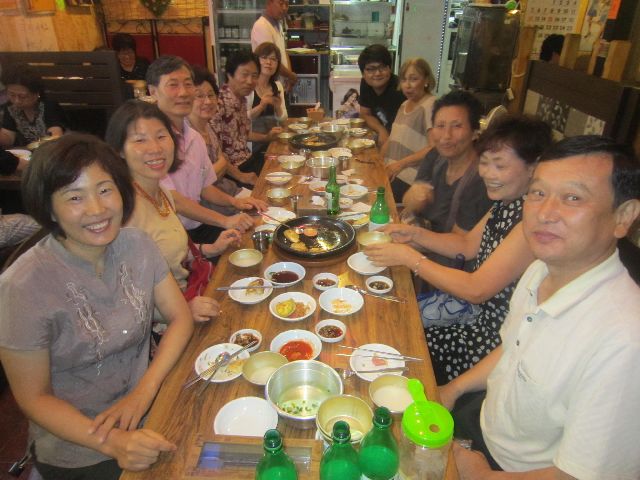
2972. August 15th. These Esperanto speakers invited us for
dinner, the last evening of our stay in Seoul.
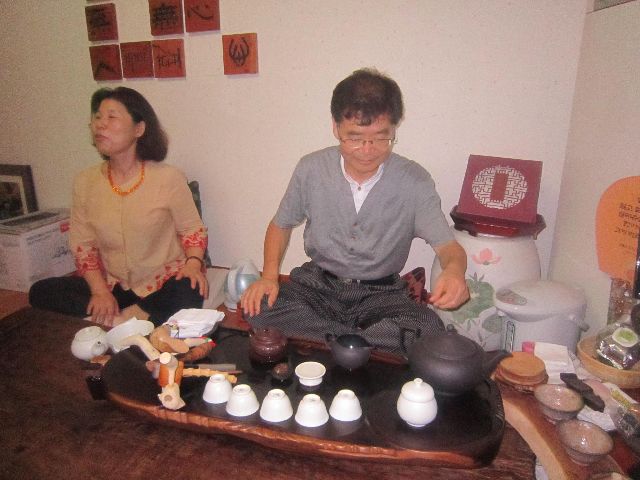
2977. August 15th. Brila invited us to visit her apartment. Her
husband performed the tea ceremony for us.
|
Other ways to use Esperanto
(To M1
M2 M3
First picture)
10.
Esperanto helped
to improve the economic level of many countries.
In his books, "Trans la Flava Maro" (Beyond the Yellow Sea), and "Ruga Suno kaj Verda Stelo" (A Red Sun and a Green Star) Dr. Márkus Gábor discusses about his learning at Nanzan University in the city of Nagoya, in Japan, about the great increase in the Japanese economic level until 1968. "Verda
Stelo" (Green Star), an Esperanto organization, gave him a
scholarship to study in that university. Without the help of
Esperanto, Dr. Markus could have not taken advantage of this
studying.
When he returned home, using what he learned in Japan, he helped to improve the economic status of Hungary. Seeing this, some European countries asked Dr. Markus for advice. Thus, some of these countries also improved, and Hungary and other former communist countries joined the European Union. The Danish Esperanto movement also helped in this project.
Some other countries have benefited from the teaching of Dr. Markus ... some Arab countries ... and even China have benefited since. Hungarian engineers went to China and found a great source of oil.
Result: these benefits only occurred because Dr. Márkus knew Esperanto, getting help from the Japanese Esperanto Movement and the Danish Esperanto movement.
The books: Trans la Flava Maro
Ruĝa Suno kaj Verda Stelo
Read the abstracts
and something about Dr. Márkus Gábor
Read the whole books
11. Not intended benefit: Knowing
Esperanto helps to learn other languages.
(To M1 M2
M3)
(Is this a good reason to learn Esperanto?)
Many Esperanto speakers were trying to learn another
language when they discovered Esperanto. They (and I)
assure that after knowing Esperanto, the other language
became easier to understand. This one wasn't among the
reasons to create Esperanto.
Some USA Esperanto students said:
-- Now I understand the (English) grammar I couldn't understand
when I was in school.
-- Now I understand better the works of Shakespeare.
12. Students who know Esperanto do better in other
subjects
(To M1
M2 M3)
Language teachers know that learning another language
enhances the native language proficiency, but not only
language teachers teach Esperanto in School. Some math,
science, or even arts teachers, also do that. Many of them
reported that the students that know Esperanto do better
in other subjects.
13. Learning Esperanto as a child
(To M1
M2 M3)
Hearing other people speaking several languages, many times
we wonder why aren't we like them? Why didn't we start to learn
languages in our infancy? Now we can do that for our
children.
From birth, one parent could use the local language and the
other should use Esperanto ... always. At 2 years old, the toddler
may start to watch videos ... no more than 20 minutes a day.
(a young child should not get used to movies or TV)
Mazi.
These 2 animations are very good for children.
Text of the videos.
Infanoj Ĉirkaŭ la Mondo
(Children Around the World)
Books, stories and songs for children.
Denaska, Parents who speak
Esperanto to their children from birth.
Vikio por esperantaj familioj
(Wiki for Esperanto families)
Rondo Familia,
Meetings of families, whose children speak Esperanto.
Cared by: Amri Wandel
(broshures for download)
Listen to the voice
of Dominika Krajeńska from Poland. (3 min
43 sec). Dominika is a 12-year-young girl who participated
ARKONES, in Poznań, Poland, September 20-22, 2013,
interviewed by
Poland Radio October 8, 2013. (19 min 57 sec)
14. Vikipedio
(To M1
M2 M3)
As of June 20, 2017, in the Esperanto Wikipedia there
were 239,969 articles.
15. Books
(To M1 M2
M3)
There are thousands of books, thousands of magazines,
thousands of articles,
thousands of podcasts with text, web pages, chat rooms, vocabularies, blogs,
videos, Esperanto groups in Google, Yahoo, Facebook,
all in Esperanto;
available on the web for free.
Full listing.
You can also buy some of them from a few
online book stores (retbutikoj).
Of the thousands of different titles, about half are Esperanto
originals, and the
rest are translations from many
languages.
Text books to learn
Esperanto.
Being Colloquial in Esperanto, by David K. Jordan
(English)
Esperanto by Direct Method, by Stano Marček,
translated by Roy McCoy. (English)
Books
for beginners.
Books
for children.
Stories, tales.
Books for children, for younger children.
Claude Piron: (1931 - 2008) Very popular Esperanto writer.
Web site
Books
Lasu min paroli plu
Dankon Amiko
Gerda Malaperis, pdf e
Gerda Malaperis, pdf
Gerda.zip
La felicho ami. Timiga diro.
Other books.
Editorial “Sezonoj”. Aleksander Korĵenkov, Kaliningrado, Russia.
Fragments and some whole books, original Esperanto, and
translated literature from Russian, English, French, German,
and 12 other languages. Also Tolkien in Esperanto.
PDFa Librejo More than 200 books.
Partial index.
Grandaj Verkoj,
by Brendon Cardoso de Carvalho.
i-espero.info, many books and something more.
Don Harlow Literaturo.
Many books, poems, and others.
Literaturo.
Poems, fiction, magazines ...
Magazines, by Don Harlow.
Virtuala Esperanto-Biblioteko.
Something more than books.
211 Books elerno.cn China.
Some books in Chinese, most in Esperanto.
Project Gutenberg Books in Esperanto.
Esperanto-Kafejo Books in Esperanto.
Originala Literaturo Esperanta Many books,
author's biography, book reviews.
Esperanta literaturo by Jurij Finkel.
Spiritual books by Alfred Rehfeldt.
Many Books http://manybooks.net
Esperanto
i-espero.info, elibroj Many books.
Tekstaro de Esperanto
For scientific research on the text of many books.
(Esperanto)
La Esperanta Librejo Some books.
Sinjoro Tadeo; Medalionoj; La faraono; La lanternisto;
Quo vadis?; Tra dezerto kaj praarbaro; and others.
Several books including: La Sankta Biblio.
La Faraono (3 volumes) by B. Prus (translated by
Kazimierz Bein, also known as KaBe). Elektitaj Fabeloj,
by the Grimm brothers (translated by KaBe) Fabeloj de
H. C. Andersen, 4 parts, translated by L. L. Zamenhof.
And other books.
This Russian page has plenty of materials.
The Esperanto books are on the last frame near the bottom
of the page, with the title: "Nia Biblioteko". In other parts of this
page, green texts will link to readings in Esperanto.
S. T. E. B.
Scienca kaj Teknika Esperanto-Biblioteko.
Technical and Scientific Library in Esperanto.
These books and other articles allow you to learn technical
vocabulary if you want to write about these subjects.
|

|
Retoriko (Rhetoric) by Ivo Lapenna. The art of speaking ... not only in Esperanto, 346 pages.
Fundamentoj de lineara algebro (1995)
by Ulrich Matthias
Esperanto: A Language for the Global Village,
by Sylvan Zaft.
Infanoj Ĉirkaŭ la Mondo
(Children Around the World)
Books, stories and songs for children.
221 books
in Esperanto. Click the name of the book, then
you may click on "Baixar", which means "download". (in Portuguese)
One Language for the World, and how to achieve
it, by Mario Pei, in English.
The Phenomenon of Esperanto 180 pages,
in English.
Published by a Croatian not-Esperanto
organization.
17. Magazines (To M1
M2 M3)
Bitoteko. de Hispana Esperanto-Federacio
Gazetoteko.
More magazines ... some are no longer published.
La Ondo de Esperanto. Editorial “Sezonoj” Aleksander
Korĵenkov, Kaliningrado, Russia.
Eventoj. Full archive. Eventoj was a 2-weekly
international Esperanto magazine, which appeared between
1992 - 2002. The full electronic archive also has a good working
search engine. The informational task of paper Eventoj
later was taken over by the e-mail newsletter
Ret-Info.
Scienca Revuo.
ISAE: Internacia Scienca Asocio Esperantista.
Science articles.
Mikrofone.
The magazine from China Radio International, Beijing,
China.
Kontakto.
Magazine for beginners, with reduced vocabulary.
Very good to practice in order to get fluency. You can download
a few issues here. They try to publish 6 issues each year. Right
click to save pdf file:
2010-6 On the last
page is the list of words used in the magazine.
List of 1000 words used in Kontakto magazine
Vortolisto.
Juna Amiko
from ILEI
Magazine for young beginners.
Whole collection
(but the last 2 years)
Ŝlosilo for Juna Amiko, is the vocabulary of 1000 words
used in Juna Amiko,
in 5 languages, including Esperanto and English.
It is the last item in the collection.
18. Radios.
Many radios
More radios
Panorama
Vikipedio
(To M1
M2 M3)
There are Esperanto radio-stations broadcasting by short waves,
AM, FM, and podcasts.
China Radio International.
Radio
Programs
Vikipedio
Radio Havana, Cuba
Radio
Podcasts
Facebook
Vikipedio
Vatican Radio
Radio
Archive
Podcasts
IKUE
Vikipedio
3ZZZ Radio, Melbourne, Australia
Radio
Archive
Vikipedio
19. Podcasts
More podcasts (To M1
M2 M3)
Pola Radio:
On this page you can select: Novaĵoj, Felietonoj,
Sciencaj informoj. They all have sound and text.
Pola Radio
January 2011
All podcasts after
January 2013.
Esperanta Retradio.
Anton Oberndorfer has been adding a podcast a day since 2011.
Good pronunciation and full text, more
than
1000 podcasts. Also
videos (filmetoj).
Different views:
classic
card
magazine
mosaic
sidebar
snapshot
timeslide
Lists:
mar-aug 2011 and a few previous (187 podcasts)
sep-dec 11 (122)
jan-jun 12 (182)
jul-nov 12 (153)
dec 12-feb 13 (90)
mar 13 (31)
up to today
Muzaiko Retradio
estas tuttempa tutmonda tutmojosa tutesperanta
retradio-kanalo! Muzaiko ludas por vi 24 horojn en tago
muzikon,
programerojn, novaĵojn, informojn, raportojn, arkivaĵojn kaj
multe pli!
(Muzaiko is a full-time, global, current, retradio-channel in
Esperanto!
Muzaiko plays for you 24 hours a day, music,
programs, news,
information, reports, and much more!)
|

|
Radio Verda.
The best podcasts for beginners because of their good
pronunciation.
Short articles with very interesting subjects.
A total of 202 podcasts, no more will be added.
Budhano (From China, with text)
Radio Aktiva, Montevideo, Uruguay
Esperanto Radio. Some choices.
3ZZZ Radio. Melbourne, Australia.
20. Esperanto speakers
(To M1 M2 M3)
Ivo Lapenna:
(1909 - 1987) Was one of the best Esperanto speakers. He was
president of UEA, the World Esperanto Association, from 1964
to 1974. He wrote books in Esperanto and also in other
languages.
Foundation
Vikipedio
Files to download:
Books
Videos
Sound recordings
Mark Fettes: Current President of
UEA,
since July 20th, 2013.
Current President of
ESF,
Esperantic Studies Foundation.
Vikipedio
Videos
Humphrey Tonkin:
President of UEA, from 1974 to 1980 and 1986 to 1989.
Vikipedio
Videos
Duncan Charters: Former president of
ILEI Internacia Ligo de
Esperantistaj Instruistoj.
International League of Esperanto teachers.
Vikipedio
Videos
José Antonio Vergara:
Doctor in epidemiology, UEA Estrarano.
Vikipedio
Videos
Claude Piron: (1931 - 2008) Very popular Esperanto
writer.
Libroj
Lectures in Esperanto:
1
2
3
4 Videos:
in English
In French:
1
2
3
4
21. Songs, Music.
(To M1
M2 M3)
All free songs and music are in
Kantoj, Muziko
More than 560 songs, more than 110 groups
or singers.
To buy music:

22. Videos, movies
(To M1
M2 M3)
Claude Piron The language challenge, facing up to
reality. In English.
Enrique in Colombia
in Esperanto, with subtitles in Spanish.
FarbSkatol
Many videos.
YouTube Many videos.
Esperanto-tv.com Many categories.
To learn Esperanto:
Animations,
with full text. 77 + 80 + 15 minutes.
At YouTube, 18 parts.
Almost 3 hours.
Esperanto, Pasporto al la Tuta Mondo with actors
from 12 countries. More than 7 hours of video.
Videos with Esperanto subtitles.
Movies,
Report. In Wikipedia
1
2
3
The following films were produced by
Christopher R. Mihm
in English, and then doubled into Esperanto. Both
versions were released the same day. The DVD allows to chose
the spoken language, and the language of the subtitles.
May 25th, 2011, premiere:
Atako
de la Lunaj Zombioj, in Esperanto.
Prezentado in YouTube.
In Vikipedio, in Esperanto.
Attack of the
Moon Zombies, in English.
Movie
trailer.
May 23rd, 2012, premiere:
Domo de Fantomoj.
House of
Ghosts, in English.
Movie trailer.
May 22nd, 2013, premiere:
Giganta Araneo, en Esperanto.
Prezentado in YouTube.
The Giant
Spider, in English.
Movie trailer.
April 26th, 2014, premiere:
Double
Feature, in English.
Movie trailer.
Du Filmoj:
X: La Fiulo el Fremda Kosmo kaj
Tra la Muro.
X: The Fiend from Beyond Space and
The Wall People.
May 2016: La Monstro de la Lago Fantoma
The Monster of Phantom Lake,
presented on March 9, 2006.
The Esperanto version just appeared.
Prezentado in YouTube.
26. YouTube (To M1
M2 M3)
Filmetoj.
Esperanto short films.
Kantoj.
Esperanto songs.
Vimeo.
Esperanto
UEA
Albums
more
Videos, lectures.
27. Facebook (To M1
M2 M3)
Facebook
Esperantaj Grupoj
(More than 80 groups)
28. LinkedIn (To M1
M2 M3)
Open your
LinkedIn, page.
On top left, click "Groups". On the search box enter "Esperanto"
and click the magnifying glass on the right.
29. Discussion groups, forums. (Google, Yahoo Groups)
(To M1
M2 M3)
Esperanto Yahoo groups. Many groups.
Note: Yahoo doesn't care to show the Unicode letters.
Sometimes they show. If you join each group, the e-mail
you receive may show the correct letters.
102 ESPERANTO, for beginners. You may ask
in any language.
Esperanto-anekdotoj, jokes.
Curso de Esperanto, in Spanish.
How to use it.
Per-esperanto-literaturo, any literature, but write in
Esperanto.
Per-esperanto-radioj,
Esperanto-amatoroj, for radio amateurs.
Esperanto-instruado, For people that wants to teach
Esperanto.
UEA membroj, For members of UEA, the world
Esperanto Association.
Google groups, forums:
San Diego, California, USA.
Denaska, Parents who speak
Esperanto to their children from birth.
Buenos Aires, Argentina.
Libera Programaro,
Free applications, improvement, creation, convert to
Esperanto.
Esperanto Aktuale, Esperanto news.
Esperanto-Scienco,
Esperanto for Science.
Esperanto-rio-2016,
Esperanto for the Olympics 2016.
Grupo Amikema,
International Language Club.
Eŭropaj Federistoj.
Esperanto-en-lernejojn,
International group to advance Esperanto Teaching
in the schools.
Medicinistoj-por-esperanto. Doctors, and related,
for Esperanto.
La Karavelo, Literature
Magazine.
Komerco, International Trade, by
IKEF,
The International Association of Merchants.
Esperanto-instruado.
Esperanto teaching.
soc.culture.esperanto,
The oldest forum for all subjects related to Esperanto ...
from the time when only universities and government
institutions had access to Internet.
Ipernity Groups. More than 100 Groups.
30. Current events (To M1
M2 M3)
Studio.
Ĉiutaga ĵurnalo. (Journal)
Libera Folio.
Sendependa Movada Bulteno. News and comments
about Esperanto in Esperanto.
China Radio International
Radio from Beijing, China.
Many
Videos.
El Popola Ĉinio
Magazine from Beijing, China.
Ret-Info
Sends news by e-mail.
31. Web sites with many Esperanto materials
(To M1
M2 M3)
Lernu.net
Is the biggest site to learn Esperanto. It has many courses in
several levels,
and many other ways to learn and practice.
Works in more than 30 languages.
Edukado.net great
resource for teachers, but also for learners, exercises,
(Instrumaterialoj),
books (Biblioteko), pen
pals (Koresponda Servo).
Eventoj
La Esperanto-centro. Many materials, many links.
Calendar
Bitoteko de la Hispana Esperanto-Federacio.
At Europeana
At Pinterest
Este es el repositorio digital de la Federación Española de
Esperanto.
Bretaro,
Elektronika arkivo de esperantaj materialoj.
Online electronic file of Esperanto materials.
News,
(Novaĵoj)
Books, (Libroj, Verkoj)
Magazines,
(Revuoj, Gazetoj)
Kunlaboro, Fabeloj en Esperanto. (Fables in
Esperanto) Some read aloud, some
illustrated, some with text. Also Vietnamese fables, and
videos with subtitles.
32. Web sites with many links
(To M1
M2 M3)
Esperanto Fremont.
Enrique's site.
Rochester University, N. Y., USA (Esperanto ĉe la Universitato
de Roĉestro)
Kurso.
Kafejo.com by William Patterson (Ailanto)
Many links.
Esperanto.info. Esperanto information in many
languages.
Esperanto-TTTejo by Jurij Finkel,
Russia, in Esperanto.
Virtuala Esperanto-Biblioteko.
(The Virtual Esperanto Library)
33. Other Esperanto web sites
(To M1
M2 M3)
ESF.
Esperantic Studies Foundation.
(Page in English
or in Esperanto)
ESF works to further the understanding and practice of
linguistic justice in a multicultural world.
We aim to develop and support excellence in scholarship,
education, and interlingual communication.
Our priorities and values are shaped through engagement
with the worldwide community of Esperanto speakers,
as well as with researchers, educators and activists in
many language-related fields.
You may help.
(Page in English
or in Esperanto)
ILEI Internacia Ligo de
Esperantistaj Instruistoj.
International League of Esperanto teachers.
AATE
American Association of Teachers of Esperanto.
SAT
Sennacieca Asocio Tutmonda, the World
Non-national Association, aims to help progressive people
across the world: to understand, to learn, to know, to improve
their lives, form relationships to act against oppression, etc. SAT uses a reasonable planned language to achieve its
objectives: Esperanto.
Eŭropa Esperanto Unio.
Bulteno. (en Esperanto)
China Radio International
Radio from Beijing, China.
Many
Videos.
El Popola Ĉinio
Magazine from Beijing, China.
Libera Folio.
Sendependa Movada Bulteno. Esperanto news and
comments.
Retejo por Aktivuloj
EKO / AMO / Ni semas / Gvidiloj / FLAM
Pasporta Servo
Internacia gastiga servo per Esperanto.
(International hospitality service in Esperanto)
Por Esperantista Retejo. by Frank Merla, Stelle, near
Hamburg, Germany.
Tutmonda Esperanto-adresaro. by Martin Schäffer.
Mondeto. Education
for Global Citizens.
EsperantoLand
Louis Ferd. v. Wunsch-Rolshoven, Berlin, Germany.
La TTT-ejo de Bertilo by Bertilo Wennergren,
in Esperanto.
Brief Note on Esperanto by David K. Jordan
(English)
Esperantisma Ludejo by David K. Jordan
(Esperanto)
Claude Piron
Biography in French and Esperanto.
Claude
Piron Articles in many languages including French,
Esperanto, English ...
Esperanto en Ameriko.
Esperanto-TTTejo Jurij Finkel,
Russia, in Esperanto.
Esperanto.com Social site. Services specific for
Esperanto speakers.
Klaku.net. Helps Esperanto speakers to get together,
and also has news.
La Karavelo. International cultural magazine.
Facila Vento.
Portos vin al Esperanto. Facilaj tekstoj. (Easy reading)
VerdaKrajono. Learn Esperanto.
Some documents are in Spanish.
34. Blogs (To M1
M2 M3)
Chuck Smith at Transparent Language
Mireille Grosjean (eo, fr)
Tonyo del Barrio.
Blog
in Esperanto
in Spanish
Ĝirafo Esperanto-blogo, kelkfoje blago, de Ralph Dumain
E @ I de ikso.net
Gbeglo Koffi
Artikoloj. (El Lomé, Togolando)
Maria Nazaré Laroca Poems, in Esperanto and
Brazilian Portuguese
35. Organizations that use Esperanto
(To M1
M2 M3)
AIS.
Akademio Internacia de la Sciencoj, San-Marino (in Vikipedio).
(International Academy of Sciences, San Marino)
(in English).
Membro de IAUPL (International Association of University
Professors and Lecturers)
Enhavo de la unua libro. (Contents of the first book) (Inhalt des ersten Buches)
Esperanto
Insulo. Hajnano, Ĉinio.
The Esperanto Island, Hajnan, China.
Hainan University, No. 58, Renmin Avenue, Haikou,
Hainan Province, 570228, P. R. China.
(in Chinese).
Kursaro en Esperanto kaj pri Esperanto.
Courses in Esperanto and about Esperanto.
Kurso de Astronomio. Universitata kurso en video:
"Enkonduko al Astronomio kaj Astrofiziko" de
Profesoro Amri Wandel, en kadro
de la Pekina Esperanta
Astronomia Kurso en 2012. 33 videoj de 45 minutoj.
Course of Astronomy. University course in Esperanto, in video:
"Introduction to Astronomy and Astrophysics"
by Professor Amri Wandel, within
the Beijing Esperanto Astronomical Course in 2012.
33 45-minute videos.
Zamenhof Instituto,
a School in Lome, Togo, Africa.
Another page in
French and Esperanto. (Please don't click on the
advertising)
If you don't understand, please scroll down the whole page to
see 49 pictures.
Flickr Fotoj Paĝo de 2008
TIETO
Vikipedio
Dutch Page.
Fazenda Escola Bona Espero, Instituição Educacional
Esperantista.
(Farm-School, Educational Institution Esperantista)
In Esperanto
In Portuguese
In Spanish
Esperanto Brasil
Facebook:
1
2
Video 3:19 (1987)
Video 2:10
Wikipedia:
Esperanto
English
Español
En Bona Espero, kantita de Ĵomart kaj Nataŝa.
(Sang by Ĵomart and Nataŝa)
36. Buying books, and more. Retbutikoj
(To M1
M2 M3)
Esperanto-USA on-line Bookstore / Retbutiko
1
2
UEA retbutiko, Universala Esperanto Asocio,
Netherlands.
Flandra Esperanto-Ligo, Antwerpen, Belgium,
Retbutiko
1
2
About Esperanto:
51. What is Esperanto?
(To M1
M2 M3)
Esperanto is a language, the easiest one to learn.
Esperanto is a planned language.
It was planned by L. L. Zamenhof, the initiator of Esperanto,
who published the language in 1887.
Because it was planned, the grammar is simpler than in other
languages, and doesn't have exceptions to its rules.
The alphabet has a direct relation to the sound: each letter has
only one sound. Each sound is represented by just one letter.
When reading, you must pronounce all the letters.
The stress is always in the syllable before last.
During the last 127 years, the language evolved by use, like any
other language. It has users in almost every country. I have
spoken Esperanto in 20 countries.
This web page shows many ways to use Esperanto.
52. Learning Esperanto (To
M1
M2 M3)
Many courses and methods to
learn and practice
Esperanto.
Please take a short time to choose a course to learn Esperanto.
Complete the course. Don't keep jumping from one course to
another. After you finish one course, you may choose another.
If you cannot decide, I recommend the interactive course:
"Kurso de
Esperanto", by Karlo Pereira from Brazil.
Ask for a tutor.
Duolingo
started to teach Esperanto for English speakers
on May 28, 2015. (free)
By April 18, 2016,
there were more than 363,000 registered Esperanto learners.
Lernu.net
Is the biggest site to learn Esperanto. It has many courses in
several levels, and many other ways to learn and practice.
Can be reached in 30 languages or more.
Edukado.net great
resource for teachers, but also for learners, exercises, (Instrumaterialoj),
books (Biblioteko), finding
pen pals. (Koresponda Servo)
Zagreba Metodo:
is the simplest basic course. It teaches the 500 more frequent
used words.
Classic version
in English
en Español
More in this page
The new
interactive version. Lessons:
01
02
03
04
05
06
07
08
09
10
11
12
"BEK-Kurso", by Dennis Keefe. Nova kaj Baza EKzercaro de Esperanto.
New, basic, Esperanto exercises. (Plenty of them)
Curso de Esperanto, de Jubilo. En español.
Correlativos:
1
2
3 Participio:
1
2
3 Gerundio:
1
2
3
53. Some extra help to learn Esperanto
(To M1
M2 M3)
In English:
To
reach fluency
in Esperanto.
Google Translate, Up to now, computer translators
are far from perfect ... but they are getting better. Even if not
perfect, Google helps a lot. It is much faster than a dictionary.
You would have to review the translations. Clicking left in any
word, could show an alternate translation.
Correlatives, by Don Harlow.
Correlatives, by David K. Jordan.
Being Colloquial in Esperanto, by David K. Jordan
(English)
Esperanto Key, by Christopher Zervic.
Correlatives,
Accusative.
Gerda Malaperis, Book by Claude Piron. (pdf) (Enrique)
Gerda Malaperis, Book by Claude Piron. (pdf)
(Bretaro)
La Gerda Kurso (Intermediate),
Lecionoj 01 - 25
(htm)
Book
Vocabulary
Chapters 01-03 translated
to English
to Spanish
Listen or download the reading of the book by
chapters, 01 - 25
In Esperanto:
Por
atingi fluecon
en Esperanto.
Plena Manlibro de Esperanta Gramatiko
PMEG,
de Bertilo Wennergren.
La tuta Esperanto, Gramatiko por progresintoj
de Henrik Seppik. (pdf)
Gramatiko de Esperanto,
de Miroslav Malovec. (pdf)
Hejma Vortaro,
Everyday house vocabulary. Archive
Baza Radikaro, Esperanto-Esperanto. 2500
radikoj
pdf
html
Archive
ViVo,
Vikia Vortaro.
In Spanish: (en español)
Para
alcanzar fluencia
en Esperanto.
¿Sabe Usted Esperanto? Libro de Jorge Hess. Puedes leer todo el libro.
Correlativos,
Acusativo 1,
Acusativo 2,
Participios,
Comprar el libro en
Lulu.com, U$S 10.76
Elaleph.com, U$S 14.92
(To buy the book)
Manlibro de Esperanto.pdf de Jordi Torres
hispana pdf
02
Gramatiko de Esperanto.pdf de Jordi Torres
hispana
01
02
Gerda Malaperis,
Libro de Claude Piron. (pdf) (Enrique)
Gerda Malaperis, Libro de Claude Piron. (pdf)
(Bretaro)
La Gerda Kurso (Intermedio),
Lecionoj 01 - 25
(htm)
Libro
Vocabulario
Capítulos 01-03 traducidos
al español
al inglés
Escucha o baja la lectura del libro por
capítulos, 01 - 25
Diccionario Esperanto-Español
Lexicon Sopena
(pdf)
Curso para aprender escuchando,
Esperanto-Español
Sonido y texto.
54. Courses in Esperanto.
(To M1
M2 M3)
Kurso pri konfliktosolvado (elŝutebla)
Mireille Grosjean
Kurso de Astronomio. Universitata kurso en video:
"Enkonduko al Astronomio kaj Astrofiziko" de
Profesoro Amri Wandel, en kadro
de la Pekina Esperanta
Astronomia Kurso en 2012. 33 videoj de 45 minutoj.
Course of Astronomy. University course in Esperanto, in video:
"Introduction to Astronomy and Astrophysics"
by Professor Amri Wandel, within
the Beijing Esperanto Astronomical Course in 2012.
33 45-minute videos.
Universitato de Esperanto Courses in Esperanto:
Alfronti Militon, 20 lecionoj de 2 horoj, Profesoro Ron
Glossop, Usono.
Leciono 01
Filozofio kaj Historio de la Informadiko, 20 lecionoj de 2
horoj, Profesoro Federico Gobbo, Italio.
Leciono 00
Enkonduko al Astronomio kaj Astrofiziko, Profesoro Amri
Wandel, Israelo.
Leciono 01
55. Esperanto is the easiest language to learn. Learning time is
shorter. (To M1
M2 M3)
It was created with the intention to make it easy to learn.
Because the grammar was created first, there aren't exceptions
to its rules, and it has a better structure.
It wasn't created from scratch. The grammar includes only the
necessary elements from other grammars. Each letter has only
one sound. Each sound is represented by only one letter.
All letters have to be pronounced. The vocabulary was taken
mainly from common words in many European languages.
But it is not "only" European. Esperanto was meant to be
used by a world culture, by people from all countries. Some
elements, customs or events that are exclusive from one
country or one region, had to be taken from the language
of that region.
For most people, learning an "easy" language takes more than
600 hours. Other languages can take much more. For most
students, 150 hours are enough to get some fluency in
Esperanto. Some students start chatting after studying only 20
hours.
56. Writing in Esperanto
(To M1
M2 M3)
When reading in Esperanto, you have to pronounce every letter.
Each of them has only one sound. Each sound is represented
for only one letter.
To represent all the sounds it needs more letters.
Esperanto
doesn't use the letters: q w x y
The extra Esperanto letters are:
Ĉ ĉ Ĝ ĝ Ĥ ĥ Ĵ ĵ
Ŝ ŝ Ŭ ŭ
To write the special letters you may use "x" instead of " ^ ":
(x is not an Esperanto letter)
ĉ cx ĝ gx
ĥ hx ĵ jx
ŝ sx ŭ ux
Esperantilo: is an editor; converts cx
to ĉ; checks spelling.
Tajpi
and Ek
(Esperanta Klavaro) convert
cx to ĉ; on any window where you can write.
Facililo:
To write in Esperanto using the 900 most frequently used words.
About 450 of the most frequently used words will show in green.
The next 450 will show in blue. Red means words less used,
wrong spelling, or unknown.
Lingvoilo: will check the grammar and spelling
for
Esperanto,
Español,
English,
Portuguese,
and many
other languages.
Lingvohelpilo
will help you check the Esperanto grammar.
List of the 1000 more frequent, easy words
Vortolisto.
How to write "easy" for Kontakto magazine:
Reguloj.
Monda Horo To know the time in any part of
the world.
61. Esperanto
organizations (To M1
M2 M3)
UEA. World Esperanto Association.
(in English)
Esperanto-USA, USA Esperanto Association.
(in English)
TEJO, Tutmonda Esperantista Junulara
Organizo.
World Esperanto Youth
Organization.
USEJ, Usona Esperantista Junulara Organizo.
(in English)
Basic information.
The U. S. A. Esperanto Youth Group.
Ameriko.org, Activity in America. (in
Esperanto)
ILEI
Internacia Ligo de Esperantistaj Instruistoj.
(International League of Esperanto Teachers)
AAIE ILEI USA and Canada.
Association of Teachers of Esperanto.
E@I. Edukado@Interreto
Education @ Internet.
62. How can we help? (To M1
M2 M3)
The best approach ... is to learn and
USE Esperanto.
Other ways to help:
Join UEA:
Universala Esperanto-Asocio,
the Esperanto World Association.
Join TEJO:
Tutmonda Esperantista Junulara Organizo,
the Esperanto Youth World Organization (up to 35 years old)
Join your
country organization, and/or region, or city.
Esperanto-USA
Join
You are invited to help
ESF.
Esperantic Studies Foundation.
(Page in English
or in Esperanto)
ESF works to further the understanding and practice of
linguistic justice in a multicultural world.
We aim to develop and support excellence in scholarship,
education, and interlingual communication.
Our priorities and values are shaped through engagement
with the worldwide community of Esperanto speakers,
as well as with researchers, educators and activists in
many language-related fields.
You may support ESF.
(Page in
English
or in
Esperanto)
63. The purpose of this page
(To M1
M2 M3)
I dedicated this page to ...
... the people that know nothing about Esperanto, but keep
repeating that nobody speaks Esperanto, that there is no use
for Esperanto, that Esperanto doesn't have a culture, and that
learning Esperanto is a waste of time.
... some people that studied Esperanto, but then quit, saying
that it is very difficult to find somebody to speak in Esperanto,
and there is no use for Esperanto.
... those people that are using Esperanto, but still want to know
more ways to enjoy this marvelous language.
In this page I am showing more than 20 reasons to learn
Esperanto; more than 20 uses for Esperanto.
I use Esperanto, English, and Spanish every day. For me, each
of these languages has a purpose. I have already spoken
Esperanto in 20 countries.
Just remember that, if you need to know another language,
learning Esperanto first, will save you time. The other languages
will become easier after knowing Esperanto.
64.
Learning other languages
(To M1
M2 M3)
No matter which language you are learning, even your native
language, learning Esperanto first will save you some
time and you will have a better understanding of how the other
languages work.
Fluent in 3 months Language learning tips by
Benny Lewis, the Irish Polyglot.
at Facebook
Benny Lewis recommends
to learn Esperanto before starting to
learn any language.
Ecela Schools
also recommends
to learn Esperanto before starting to
learn Spanish.
Many resources
to learn other languages ...
... starting with general tips about learning any language, and
then some resources for English, Esperanto, French,
Spanish, and links to other languages.
How to write well in English.
81. Some web pages by Enrique,
Pages listing
(To M1
M2 M3)
20 Reasons to learn and use Esperanto (English)
20 Kialoj por lerni kaj uzi Esperanton (Esperanto)
20 Razones para aprender y usar Esperanto (Español)
Esperanto could help to improve the world (3 languages)
Mirindaj libroj verkitaj de Doktoro Márkus Gábor
(diversaj lingvoj)
We should use Esperanto for progress in Europe and other countries
En
Es
Eo
Answers to complaints against Esperanto, links (several languages)
Some facts and comments about Esperanto (English)
Kelkaj faktoj kaj komentoj pri Esperanto (angle)
Zagreba Metodo is a
short course to learn Esperanto using only the 450
more used words, allowing
fluency in a short time, using a small vocabulary.
Includes several readings
using a small vocabulary, special for beginners.
Zagreba Metodo Kurso en:
Español
English
Esperanto
12 easy readings and 6 songs
La sentimulo
72 pages
Esperanto ne Estas nur Lingvo 23 pages
Esperanto ne Estas nur Lingvo
46 pages eo and ĉina (pdf)
Ili kaptis Elzan!
54 pages (pdf)
Cover
1000-word Eo-Eo vocabulary
bold type words are more frequent.
2500-word English-Eo vocabulary
in groups by frequency.
Consulta o baja los diccionarios de Aulex:
Esperanto - Español
Español - Esperanto
2012 World
Convention
Hanoi, Vietnam, July 27 - August 4, 2012.
20 pages, 210 pictures.
USA Convention 2007, (Page in Esperanto)
San Diego and Tijuana, Mexico, July 25 - 30, 2007.
About 20 pages, 160 pictures.
Videos to learn Esperanto:
3 animations, almost 3 hours total, and the whole
text.
Pasporto, in YouTube, more than 7 hours.
Actors from 12 countries.
Enrique's homepage:
http://esperantofre.com
(Top)
Enrique's Site
Homepage:
eo
hi
an
Books:
eo
hi
an
Songs
Updated by
Enrique,
April 12 2020
| |